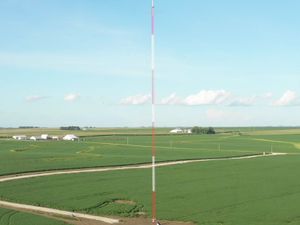Portable antennae could transform Nasa’s space communications
The mobile structures could improve communication between Earth and space.

Nasa could see an improvement to its space communication capabilities, with the invention of portable ground antenna stations.
Nasa and Atlas Space Operations are collaborating to test and develop this technology, which could help bring data from space back to earth, including data on spacecraft science and instrument health.
They will be testing its compatibility with Nasa’s ground-based communications network, the Near Earth Network.

Its mobile structures weigh less than 4.5kg, only require access to the internet and power to work, and constantly survey the sky for spacecraft signals.
Harry Shaw, an engineer at Nasa’s Goddard Space Flight Centre, said: “If this technology proves to be compatible with Nasa’s networks and provides links that are stable with respect to the movement of small satellites in orbit, the small satellite community could receive important benefits in space-to-ground communications.”
If testing is successful, these antennae could supplement space flights, be deployed as temporary ground stations in areas where Nasa does not have permanent structures, and even serve as back-ups in the event that a fixed station fails, ensuring that mission data always reaches the ground.





